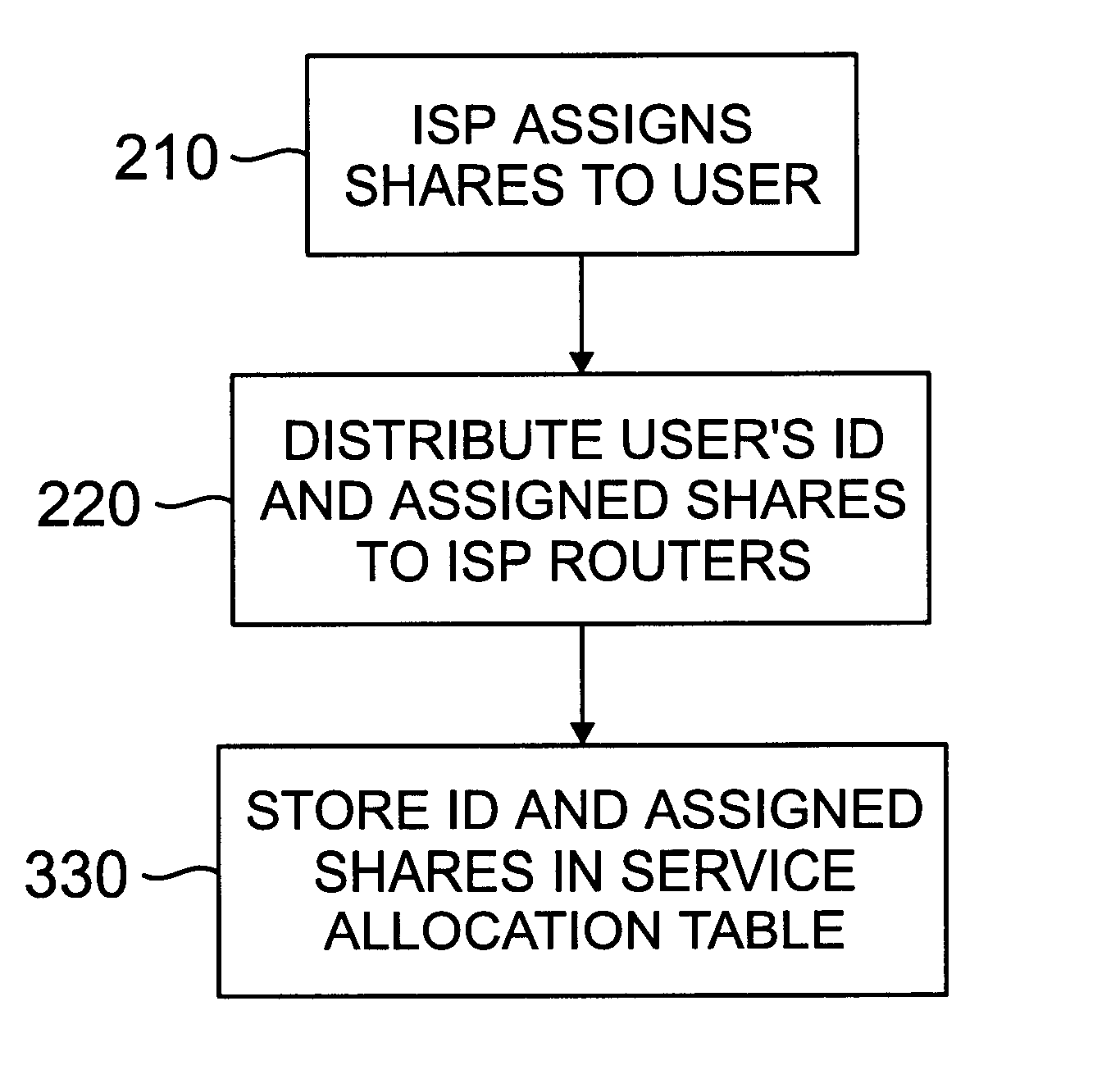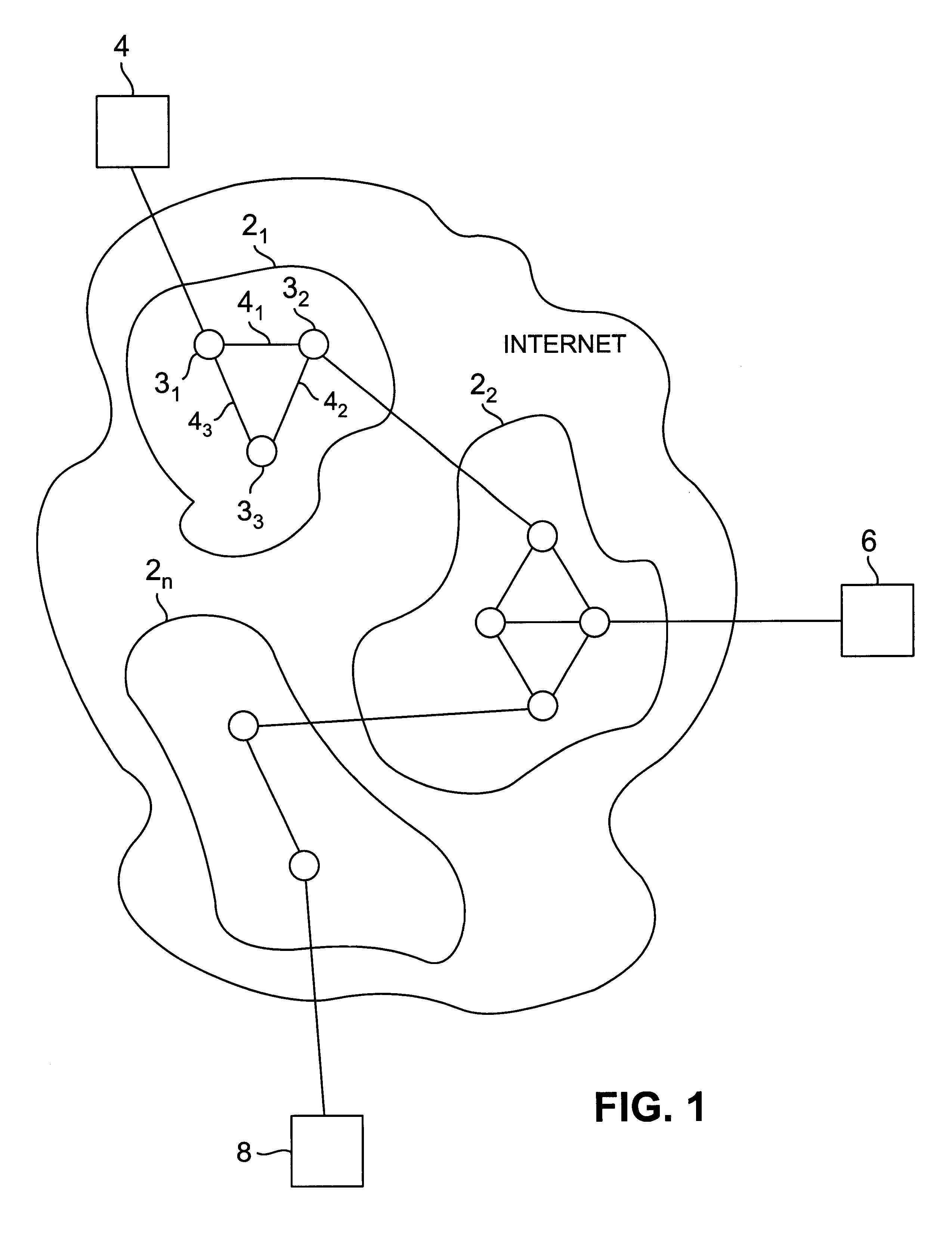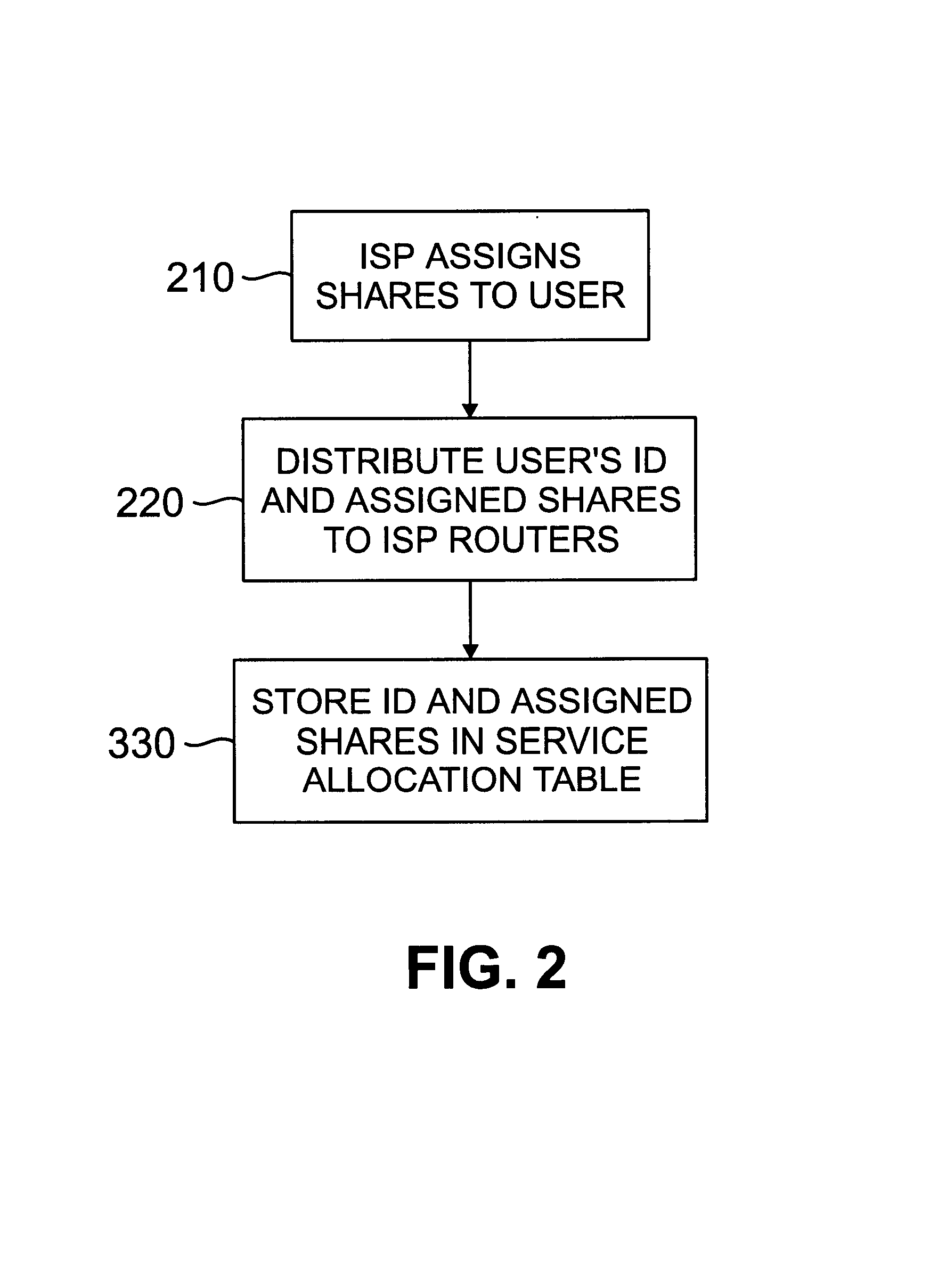Allocation of bandwidth in a packet switched network among subscribers of a service provider
a packet switching network and service provider technology, applied in data switching networks, frequency-division multiplexes, instruments, etc., can solve the problems of increasing reliance on the cooperation of host end systems, inability to guarantee a quality of service level, and inability to provide any form of traffic isolation among different users
- Summary
- Abstract
- Description
- Claims
- Application Information
AI Technical Summary
Benefits of technology
Problems solved by technology
Method used
Image
Examples
Embodiment Construction
FIG. 1 shows a simplified block diagram of a packet switched network such as the Internet. The network includes a plurality of service providers 2.sub.1, 2.sub.2, . . . 2.sub.n that each control their respective network domains. For example, the domain of service provider 2.sub.1 includes routers 3.sub.1, 3.sub.2 and 3.sub.3 interconnected by links 4.sub.1, 4.sub.2, and 4.sub.3. Users communicate over the network by subscribing to a particular service provider. For example, in FIG. 1 users 4 and 6 are subscribers of service provider 2.sub.1 and 2.sub.2, respectively, and user 8 is a subscriber of service provider 2.sub.n. As employed herein a user is defined as the entity to which a network resource (i.e., bandwidth ) is allocated. A user thus may be an individual terminal or an aggregate of terminals, which has a single account with a service provider. A share denotes the amount of bandwidth that is allocated to a given user.
In accordance with the present invention, when each user ...
PUM
 Login to View More
Login to View More Abstract
Description
Claims
Application Information
 Login to View More
Login to View More - R&D
- Intellectual Property
- Life Sciences
- Materials
- Tech Scout
- Unparalleled Data Quality
- Higher Quality Content
- 60% Fewer Hallucinations
Browse by: Latest US Patents, China's latest patents, Technical Efficacy Thesaurus, Application Domain, Technology Topic, Popular Technical Reports.
© 2025 PatSnap. All rights reserved.Legal|Privacy policy|Modern Slavery Act Transparency Statement|Sitemap|About US| Contact US: help@patsnap.com



